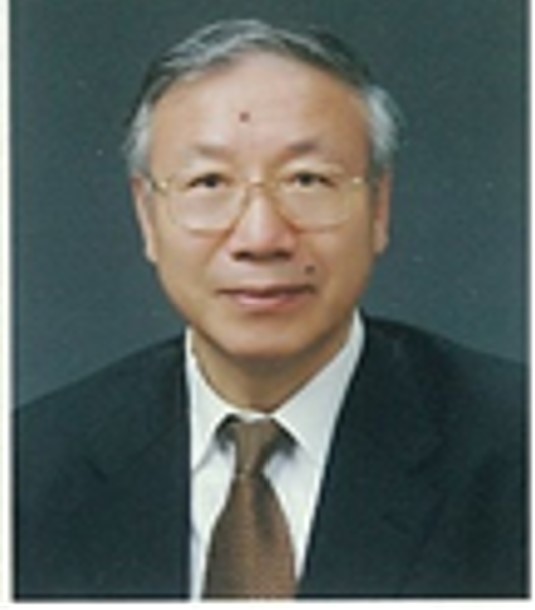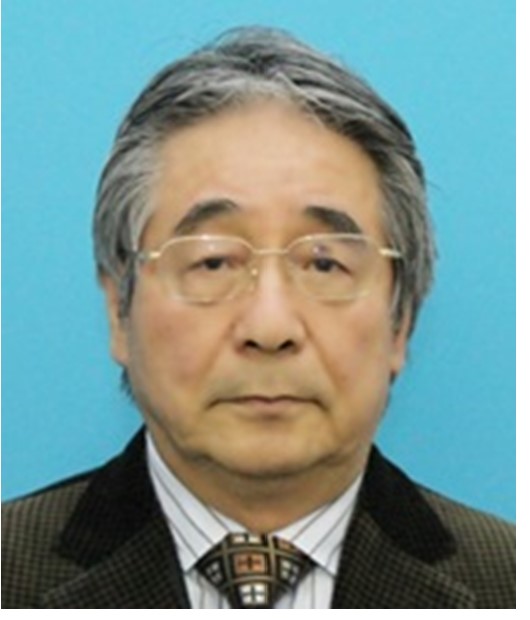Keynote Speakers – 2024 IEOM Tokyo, Japan Conference
Tuesday, September 10, 2024
Conference Welcome and Opening: Tuesday, September 10, 2024, 9:30 – 10:00 am
Opening Keynote I: Tuesday, September 10, 2024, 10:00 – 10:40 am
 Prof. Dr. Mitsuo Gen
Prof. Dr. Mitsuo Gen
Fuzzy Logic Systems Institute (FLSI): Senior Research Scientist
Tokyo University of Science (TUS), Research Inst. of Sci. & Tech.: Visiting Prof.
Fellows of Society: SOFT and APIEMS
Field Chief Editor: Frontiers in Industrial Engineering
Keynote Talk: Enhancing Multiobjective Metaheuristics with Machine Learning for Scheduling: Case Study of High-Speed Train Scheduling on GPU
Mitsuo Gen received his PhD in Engineering from Kogakuin University, PhD degree in Informatics from Kyoto University and is now Senior Research Scientist at FLSI and Visiting Prof. at TUS. He was faculties at Ashikaga Institute of Tech. for 1974-2003, at Waseda University for 2003-2010. He was visiting faculties at University of California at Berkeley for 1999.8-2000.3, Texas A&M University for 2000.1-3 & 2000.8-9, Hanyang University in S. Korea for 2010-2012 and National Tsing Hua Univ. in Taiwan for 2012-2014. His research field is Evolutionary Computation, Manufacturing Scheduling and Logistics Systems. He is a coauthor of the following books: Genetic Algorithms and Engineering Design, 1997 and Genetic Algorithms and Engineering Optimization, 2000, John Wiley & Sons, New York; Network Models and Optimization: Multiobjective Genetic Algorithm Approach, 2008 and Introduction to Evolutionary Algorithms, 2010, Springer, London. He is one of Area Editors of Computers & Industrial Engineering and Field Chief Editor of Frontiers in Industrial Engineering.
Abstract:
Many real-world applications for complex design problems could be modeled as optimization problems. These problems are often characterized by complex features such as multi-modality, dynamics, discontinuity, and nonlinearity. There problems are combinatorial optimization problems (COPs) imposing on more complex structure, nonlinear constraints, multiple objectives and uncertainty. The COPs make the problem intractable to the traditional approaches because of NP-hard ones. As one of the most typical scheduling problems, flexible jobshop scheduling problem (FJSP) is a generalization of the jobshop and parallel machine environment, which provides closer real manufacturing and logistics systems.
In order to develop an efficient algorithm whose reasonable computational time for NP-hard multiobjective COPs, we have to consider 1) quality of solution, 2) computational time and 3) effectiveness of the nondominated solutions for the multiobjective COP. As the most typical metaheuristics, genetic algorithm (GA) is a population-based metaheuristic, and it is a very powerful and broadly applicable stochastic search and optimization technique which is effective for solving various NP hard problems in Industrial Engineering problems.
In this talk, multiobjective hybrid GA and machine learning (ML) for high-speed train scheduling with GPU will be introduced. As the railway networks have become larger and more complex with increasing passenger demand, both aspects from the passenger satisfaction and operational cost need to be satisfied. We incorporate a learning-based algorithm into a mutation process. The evaluation process is divided into sub-process and calculated by a parallel computational unit using GPU CUDA framework. Two sets of numerical experiments based on a small-scale case of Thailand ARL transit line, a larger case of BTS transit network and high-speed train scheduling problems in Japan are implemented to verify the effectiveness of the proposed approaches. The experimental results show the effectiveness of the proposed algorithm comparing to sequential CPU computational and two classical MoGA with ML.
Keynote II: Tuesday, September 10, 2024, 10:40 – 11:20 am
Ilkyeong Moon, Ph.D., P.E.
Professor
Former President (2019-2020), Korean Institute of Industrial Engineers (KIIE)
Department of Industrial Engineering
Seoul National University
Seoul 08826, KOREA
Keynote III: Tuesday, September 10, 2024, 11:20 – 12:00 pm
Keynote IV: Tuesday, September 10, 2024, 12:00 – 12:40 pm
Katsuki Fujisawa, Professor, Ph.D. (Sci.)
Professor
Institute of Innovate Research
Digital Twin Unit, Research Unit Leader
School of Computing
Department of Mathematical and Computing Science
Tokyo Institute of Technology
Tokyo, Japan
Wednesday, September 11, 2024
Keynote V: Wednesday, September 11, 2024, 10:00 – 10:40 am
Prof. Kenji Watanabe
Professor
Department of Architecture, Civil Engineering and Industrial Management Engineering
Nagoya Institute of Technology
Nagoya, Japan
Keynote VI: Wednesday, September 11, 2024, 10:40 – 11:20 am
Tomohiro Kojima
Principal of Salesian Polytechnic
Tokyo, Japan
Keynote VII: Wednesday, September 11, 2024, 11:20 – 12:00 pm
Reserved for Olympus Corporation Practitioner Speaker
Keynote VIII: Wednesday, September 11, 2024, 12:00 – 12:40 pm
Thursday, September 12, 2024
Keynote IX: Thursday, September 12, 2024, 10:00 – 10:40 am
Dr. Ashir Ahmed
Associate Professor
Department of Advanced Information Technology
Faculty of Information Science and Electrical Engineering
Kyushu University
Fukuoka, Japan
Keynote X: Thursday, September 12, 2024, 10:40 – 11:20 am
 Junzo Watada, Prof. Dr.
Junzo Watada, Prof. Dr.
School of Data Sciences
Shimonoseki City University
Yamaguchi, Japan
Presentation Title: A Fuzzy Multivarate Approach to Human-Centric Computing and Its Application in Software Engineering
Abstract: This presentation introduces an analytical methodology for human-centric computing (HCC) designed to evaluate human recognition and perception. The methodology encompasses three fuzzy multivariate models: (1) a regression-based fuzzy quantification model (RBFQ), (2) a fuzzy qualitative discriminant model (FQDM), and (3) a fuzzy robust regression model (FRRM). We illustrate the application of this approach in assessing residual software bugs within a delivered software system. Our aim is to improve software quality and minimize development expenses. To address system bugs, we identify influential factors based on human perceptions collected through questionnaires. The remaining bug count assists in determining system maintenance post-delivery of a software system. We devise a suite of methodologies grounded in Fuzzy Multivariate Modeling (FMM) to scrutinize data in uncertain environments. Our experiments concentrate on factors impacting software quality and empirically examine software development data. The findings underscore the importance of human-centric computing (HCC) in enhancing software development quality, motivating us to implement FMM based on HCC in a corporate context. We investigate residual software bugs following product delivery, emphasizing the duration of corporate maintenance as a critical determinant.
INDEX TERMS Macro ergonomics, Fuzzy evaluation, Software bugs, Fuzzy Regression-based quantification model (FRQM), Fuzzy qualitative discriminant model (FQDM), Fuzzy regression model, Human-centric computing (HCC), Estimation of remaining bugs, Software development.
JUNZO WATADA received his B.Sc. and M.Sc. degrees in electrical engineering from Osaka City University, Osaka (now Osaka Metropolitan University), Japan, and obtained his Ph.D. from Osaka Prefecture University (now Osaka Metropolitan University), Sakai, Japan. Until March 2016, he served as a Professor of management engineering, knowledge engineering, and soft computing at the Graduate School of Information, Production, and Systems, Faculty of Engineering and Sciences, Waseda University, Kitakyushu, Japan. Currently, he holds the position of specially appointed professor at the School of Data Sciences, Shimonoseki City University, Yamaguchi, Japan. Dr. Watada has been granted the title of Professor Emeritus at Waseda University since his retirement in 2016. His research interests encompass big data analytics, soft computing, tracking systems, knowledge engineering, and management engineering. Professor Watada is a Life Senior Member of the IEEE. He is also a Life Fellow of both the Japan Society for Fuzzy Theory and Intelligent Informatics and the Bio-Medical Fuzzy System Association. In recognition of his contributions, he received the Henri Coanda Medal Award from Inventico, Romania, in 2002 and the GH Asachi Medal from Universitatea Tehnica GH Asachi, IASI, Romania, in 2006.
Keynote XI: Thursday, September 12, 2024, 11:20 – 12:00 pm
Kenji Amagai, Professor, Dr. Eng.
Division of Mechanical Science and Technology
Graduate School of Science and Technology
Director, Center for Research on Adoption of NextGen Transportation Systems (CRANTS)
Gunma University, Japan
Keynote XII: Thursday, September 12, 2024, 12:00 – 12:40 pm
